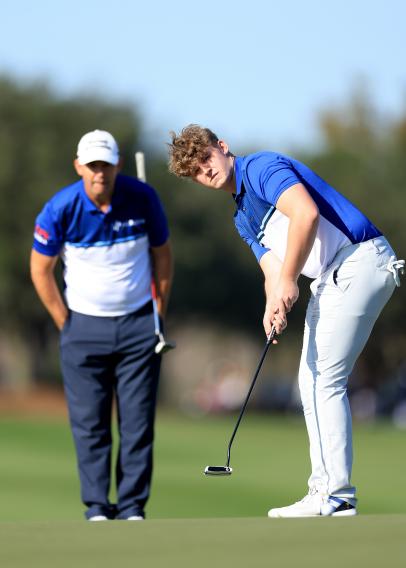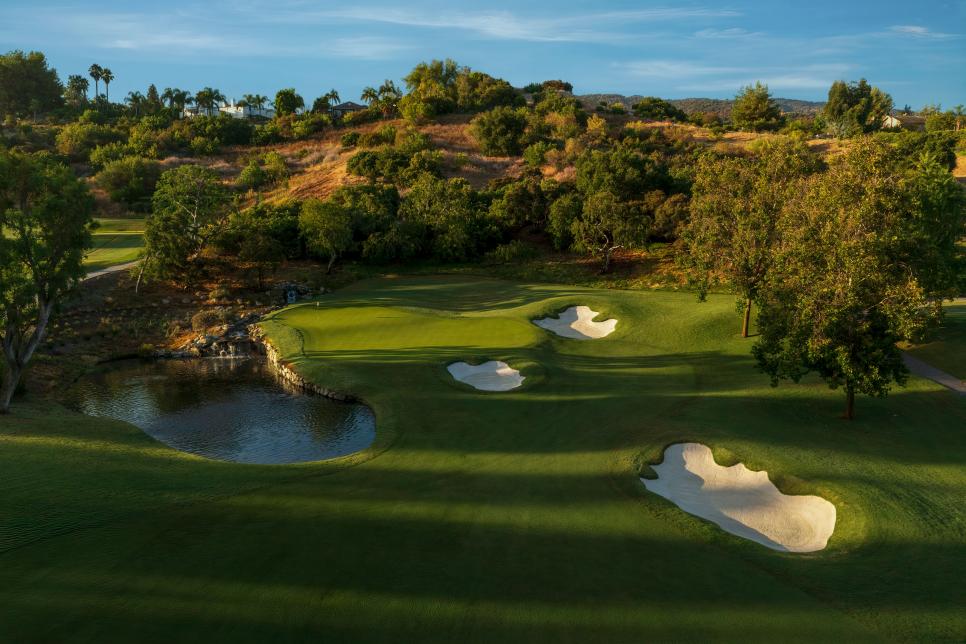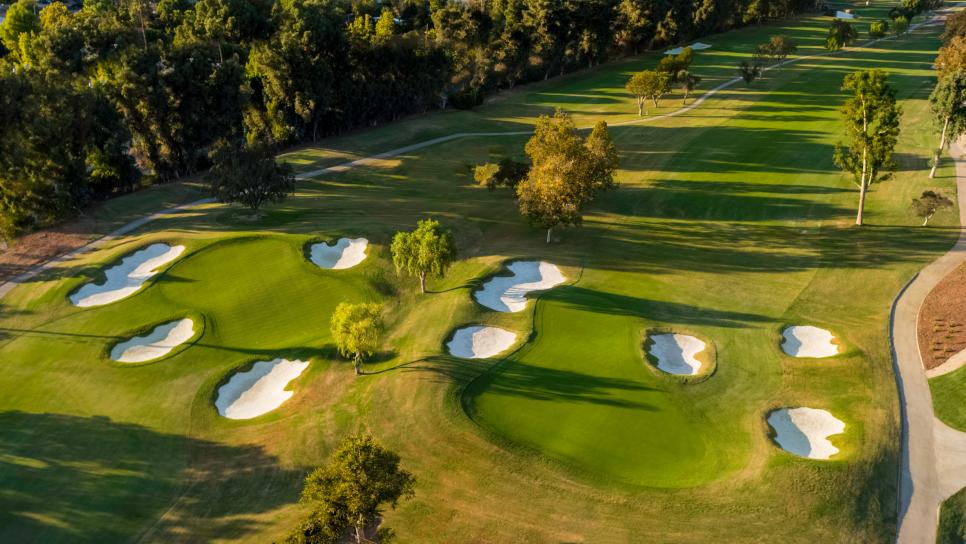John Bodenhamer, the USGA’s Chief Championships Officer, has said the association is focused on taking the men’s and women’s U.S. Opens to the historic “cathedrals of the game.” The venues booked for most of the next 25 years support that assertion, including several mainstays among America’s 100 Greatest Courses in Shinnecock Hills, Oakmont, Merion, Pinehurst No. 2, Chicago Golf Club and Pebble Beach.
Amateur championships farther down the USGA schedule, on the other hand, take participants to less acclaimed destinations that showcase the regional diversity of tournament-worthy courses across the U.S. One of them, El Caballero Country Club in Tarzana, Calif., has the honor of hosting the U.S. Girls’ Junior Amateur, July 15-20, as it enjoys a milestone moment of being played for the 75th time.
Located 20 miles northwest of downtown Los Angeles at the foot of Topanga State Park, El Caballero exudes strong southern California flavor, playing mostly north-south through an arid valley of oaks, sycamore and eucalyptus, banked on the east by a bluff that forms the inside corner of the par-4 second. Not a long course—it will play 6,347 yards and a par of 71 for the 156 girls ages 12 to 18 in the field—it’s defined by intriguing putting surface contours, gentle doglegs and several small ponds that guard the front of greens.
Once part of a large ranch that belonged to Edgar Rice Boroughs, author of the Tarzan books (he developed an early golf club on the property that went bankrupt during in the Great Depression), El Caballero was founded in the 1950s. In the 1960s, the club hired architect Robert Trent Jones to update the design, which he did by flipping the direction of several holes on the second nine, building new greens, tees and bunkers, and adding water features on five, nine and 17.
 Private El Caballero Country Club Tarzana, CA, United States In 2021, Rees Jones went to the San Fernando Valley with longtime associate Steve Weisser to orchestrate a $10 million tee-to-green revitalization of his father Robert Trent Jones’ scenic 1957 original. The upgrade consisted of rebuilding greens and bunkers, installing new drought-tolerant Bermuda fairways and selective tree removal to improve sightlines up and down the San Fernando Valley. View Course
Private El Caballero Country Club Tarzana, CA, United States In 2021, Rees Jones went to the San Fernando Valley with longtime associate Steve Weisser to orchestrate a $10 million tee-to-green revitalization of his father Robert Trent Jones’ scenic 1957 original. The upgrade consisted of rebuilding greens and bunkers, installing new drought-tolerant Bermuda fairways and selective tree removal to improve sightlines up and down the San Fernando Valley. View Course
Home to an LPGA event for 2002-04 and the 2018 U.S. Women’s Amateur Four-Ball, the club subsequently hired Rees Jones to remodel the course and bring the turf and infrastructure up to modern standards. It was a type of homecoming for Jones.
“When I was in college, I worked for my dad during the summers and I would travel with him, basically as his suitcase carrier,” Jones says. “I remember going to El Caballero and watching it evolve though I didn’t know what I was looking at very much. So when they invited me to come redo it, it was like going back to a moment in my youth.”
“It’s a very nice piece of ground with decent topography and some natural green sites,” he says. “It changes paces with a great mixture of holes that ebb and flow, with some medium-length par 4s and some short par 4s, and it finishes with two really demanding 450-yard par 4s.”
More from Golf Digest  Your Questions Answered The absolute worst thing you can do for your kid’s golf game
Your Questions Answered The absolute worst thing you can do for your kid’s golf game  Golf Digest Logo A Hall of Famer’s valuable advice for teaching your kids golf
Golf Digest Logo A Hall of Famer’s valuable advice for teaching your kids golf  Ask an Architect Are all courses designed by great architects worthy of a faithful restoration?
Ask an Architect Are all courses designed by great architects worthy of a faithful restoration?
During the $10 million renovation, completed in 2021, Jones and co-designer Steve Weisser regressed the course with drought-tolerant Santa Ana Bermuda, which makes the fairways play dry and firmer and consume 30 percent less water. They also reduced the size of the bunkering, shaping them with an attractive irregular edge. They’re now shallower and more banked into upslopes, easier for members to get in and out of.
“They’re not overly penal,” Jones says. “You can achieve your goals if you hit into a bunker.”
The greens took on a new character as well. “The green contours are probably the essence of the golf course,” Jones says. “Each green has a different shape—they’re custom designs that don’t have a repetitive shape and style. There are some elevation changes and there are a lot of breaks in the greens. So that means you can hide the pin and create different shot options.”

Fourth Hole
Kirk H. Owens

Fifth Hole
Kirk H. Owens

17th Green

First Hole
Kirk H. Owens

Eighth Hole
Kirk H. Owens

16th and 17th holes
.jpg.rend.hgtvcom.966.644.suffix/1646236933816.jpeg)
Practice Facility
David Frey
Competitors who can put themselves in position to place their short irons in the correct quadrant of the green will have more attractive looks at birdie.
“This course is not going to favor a long hitter,” Jones says, pointing out that the three par 5s are relatively short, meaning most in the field should be able to score on them. “I think it’s going to favor a kid who can think her way around the golf course.”
This article was originally published on golfdigest.com

